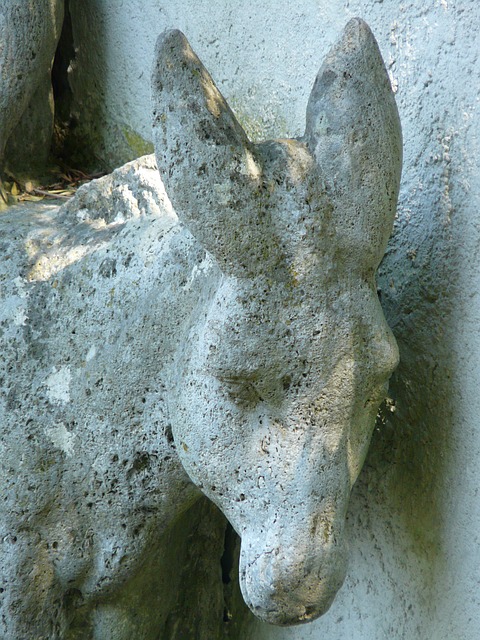الممالك الستة عشر
| الممالك الستة عشر | |||||||
|---|---|---|---|---|---|---|---|
| صينية تقليدية | 十六國 | ||||||
| صينية مبسطة | 十六国 | ||||||
| |||||||
|
| |||||||
|---|---|---|---|---|---|---|---|
| القديم | |||||||
| السادة الثلاثة والأباطرة الخمسة | |||||||
| أسرة شيا 2070–1600 ق.م. | |||||||
| أسرة شانگ 1600–1046 ق.م. | |||||||
| أسرة ژو 1122–256 ق.م. | |||||||
| ژوالغربية | |||||||
| ژوالشرقية | |||||||
| فترة الربيع والخريف | |||||||
| فترة الممالك المتحاربة | |||||||
| الامبراطوري | |||||||
| أسرة تشين 221 ق.م.–206 ق.م. | |||||||
| أسرة هان 206 ق.م.–220 م | |||||||
| هان الغربية | |||||||
| أسرة شين | |||||||
| هان الشرقية | |||||||
| الممالك الثلاث 220–280 | |||||||
| وِيْ, شوووو | |||||||
| أسرة جين 265–420 | |||||||
| جين الغربية | |||||||
| جين الشرقية |
16 مملكة 304–439 |
||||||
| الأسر الجنوبية والشمالية 420–589 | |||||||
| أسرة سوي 581–619 | |||||||
| أسرة تانگ 618–907 | |||||||
|
عشرة ممالك 907–960 |
أسرة لياو 907–1125 |
||||||
|
أسرة سونگ 960–1279 |
|||||||
| سونگ الشمالية | شيا غ. | ||||||
| سونگ الجنوبية | أسرة جين | ||||||
| أسرة يوان 1271–1368 | |||||||
| أسرة مينگ 1368–1644 | |||||||
| أسرة تشينگ 1644–1911 | |||||||
| المعاصر | |||||||
| تاريخ جمهورية الصين 1912–1949 | |||||||
| الصين الشعبية 1949–للحاضر |
جمهورية الصين |
||||||
|
منطقات ذات صلة
| |||||||
الممالك الستة عشر، والتي تسمى أحياناً الدول الستة عشر، كانت فترة في التاريخ الصيني من 304 حتى 439 والتي تشظى فيها النظام السياسي لشمال الصين إلى سلسلة من الدول قصيرة العمر، معظمهم كانوا من تأسيس شعوب اقليات عرقية استقرت في شمال الصين في القرون السابقة وشاركوا في الاطاحة بأسرة جين الغربية في مطلع القرن الرابع. الفترة انتهت بتوحيد شمال الصين على يد وِيْ الشمالية في مطلع القرن الخامس.
المصطلح "الممالك الستة عشر" was first used by the 6th century historian Cui Hong in the The Spring and Autumn Annals of the Sixteen Kingdoms and refers to the five Liangs (Former, Later, Northern, Southern وWestern), four Yans (Former, Later, Northern, and Southern), three Qins (Former, Later and Western), two Zhaos (Former and Later), Cheng Han and شيا. Cui Hong did not count several other kingdoms that appeared at the time including the Ran Wei, Zhai Wei, and Western Yan. Nor did he include the وِيْ الشمالية and its predecessor داي، because the وِيْ الشمالية eventually became the ruling dynasty of northern China.
Classical Chinese historians called the period the Sixteen Kingdoms of the Five Barbarians because most of the kingdoms were founded by ethnic Xiongnu, Xianbei, دي, Jie, Qiang, and Dingling rulers who took on Chinese dynastic names. Among the handful of the states founded by Han Chinese (ليانگ السابقة, ليانگ الغربية, Ran Wei and يان الشمالية), several founders had close relations with ethnic minorities. The father of Ran Min, the founder of the Ran Wei, was adopted into a Jie ruling family. Feng Ba, who is considered by some historians to be the founder of the يان الشمالية, had been assimilated into Xianbei culture. Gao Yun, considered by other historians to be the يان الشمالية founder, was an ethnic Korean who had been adopted by Xianbei nobility.
Due to fierce competition among the states and internal political instability, the kingdoms of this era were mostly short-lived. From 376 to 383, the چين السابقة briefly unified northern China, but its collapse led to even greater political fragmentation. The Sixteen Kingdoms is considered to be one of the most chaotic periods in Chinese history. The collapse of the Western Jin Dynasty and the rise of barbarian regimes in China during this period resembles the انحدار وسقوط الامبراطورية الرومانية الغربية amidst invasions by the Huns and Germanic tribes in Europe, which also occurred in the 4th to 5th centuries.
التاريخ
خلفية
منذ أواخر أسرة هان وحتى مطلع أسرة جين (265–420)، عاشت أعداد كبيرة من من الشعوب غير صينيي الهان في المحيط الشمالي للصين في شمال الصين. Some of these migrants such as the Xiongnu and Xianbei had been pastoralist nomads from the northern steppes. Others such as the دي and Qiang were farmers and herders from the mountains of western Sichuan. As migrants, they lived among Han Chinese and were sinified to varying degrees. Many worked as farm laborers. Some attained official positions in the court and military. They also faced discrimination and retained clan and tribal affiliations.
The War of the Eight Princes (291–306) during the reign of the second Jin ruler Emperor Hui severely divided and weakened imperial authority. Hundreds of thousands were killed and millions were uprooted by the internecine fighting. Popular rebellions against heavy taxation and repression erupted throughout the country. In Sichuan, Li Xiong, a Di chieftain, led a successful rebellion and founded Cheng Han kingdom in 304. Thus began the creation of independent kingdoms in northern China as Jin authority crumbled. Most of these kingdoms were founded by ethnic minority leaders who took on Chinese reign names.
ليويوان وژاوالسابقة
Jin princes and military governors often recruited ethnic minorities into their armies in their suppression of rebellions and wars with each other. Also in 304, Liu Yuan, a Xiongnu chieftain, who had been fighting in the Jin civil war on the side of Prince Sima Ying, returned home to Shanxi where he reorganized the five tribes of the Xiongnu and declared independence as the successor to the Han Dynasty. His regime, later renamed Zhao, is designated by historians as the Han Zhao or ژاوالسابقة.
After Liu Yuan died in 310, his son Liu Cong killed older brother Liu He and claimed the throne. Liu Cong captured the Jin capital Luoyang and Emperor Hui in 311. In 316, Liu Cong's uncle Liu Yao seized Chang'an and the Emperor Min, ending the Western Jin Dynasty. Sima Rui, a Jin prince who had moved to the South, continued the dynasty as the Eastern Jin from Jiankang (modern day Nanjing). The collapse of Jin authority in the North led other leaders to declare independence. In 313, Zhang Gui, the ethnic Han governor of Liangzhou founded the ليانگ السابقة in modern-day Gansu. In 315, Tuoba Yilu, a Xianbei chieftain, founded the داي in modern-day منغوليا الداخلية.
شي لى وژاواللاحقة
بعد وفاة ليوتسونگ، انقسمت المملكة بين ليوياووالجنرال شي لى. شي لى was an ethnic Jie who had worked as an indentured farm laborer before joining Liu Yuan's rebellion and becoming a powerful general in Hebei. In 319, he founded a rival Zhao Kingdom, known as the ژاواللاحقة and in 328 conquered Liu Yao's ژاوالسابقة. شي لى instituted a dual-system of government that imposed separate rules for Han Chinese and non-Han Chinese, and managed to control much of northern China. After his death, his sons were locked in a fratricidal succession struggle and the kingdom was ended in 350 by General Ran Min, an ethnic Han who seized the throne and founded the Ran Wei. Ran Min favored Han Chinese and massacred thousands of Jie. He was defeated and killed in 352 by the Murong Xianbei from Liaodong.
In 337, Murong Huang founded the يان السابقة in Liaodong, which by 356 had expanded into much of Hebei, Henan and Shandong. For a time, the يان السابقة vied for supremacy in northern China with the چين السابقة.
چين السابقة والتوحيد الوجيز لشمال الصين
The چين السابقة was founded in 351 by Fu Jian (317–355), a Di general, who had served under the ژاواللاحقة and surrendered to the Jin before declaring independence in Shaanxi. After his death in 355, the kingdom was briefly handed to his son Fu Sheng, before his nephew Fu Jian (337–385) took control of the leadership. Under the younger Fu Jian, who was guide by Wang Meng, a Han Chinese advisor, the چين السابقة strengthened rapidly. From 370-76, the چين السابقة extinguished the يان السابقة, Dai and ليانگ السابقة to unite all of northern China. Fu Jian also captured Sichuan from the Eastern Jin and wanted to conquer the rest of southern China. Wang Meng opposed this move, citing the need for the چين السابقة to consolidate control over various ethnicities in northern China. But the Qiang chieftain Yao Chang and the Xianbei general Murong Chui both supported the idea. In 383, after Wang Meng's death, Fu Jian launched a massive invasion of southern China, but was routed in the معركة فـِيْشوي in modern-day Anhui.
التشظي بعد معركة فـِيْشوي
بعد معركة فـِيْشوي، the power of the چين السابقة quickly unraveled as various regimes in the North broke loose. In 384, Murong Chui founded the يان اللاحقة in Hebei. Other Murong royals founded the Western Yan in Shanxi. Yao Chang founded the چين اللاحقة in eastern Gansu. Fu Jian was killed by Yao Chang, but the چين السابقة survived by relocating from Shaanxi to Gansu and then Qinghai. In 385, Qifu Guoren, a Xianbei former vassal under Fu Jian, founded the Western Qin. In 386, Lü Guang, a Di general of the چين السابقة, founded the ليانگ اللاحقة in western Gansu. Tuoba Gui revived the Dai as the وِيْ الشمالية. In 388, Zhai Liao, an ethnic Dingling leader in Henan founded the Zhai Wei, which was wedged between the يان اللاحقة, Western Yan and Eastern Jin. As many as seven kingdoms coexisted for nine years.
The چين اللاحقة, which ended the چين السابقة in 394, the Western Qin in 400, and ليانگ اللاحقة in 403, extended its control over much of Shaanxi, Gansu, and Ningxia]. But in 407, Helian Bobo, a Xiongnu chieftain, rebelled and founded the شيا in northern Shaanxi, and the Western Qin was revived in the southern Shaanxi. In 416, the Eastern Jin under General Liu Yu launched a northern expedition that captured Luoyang and Chang'an and extinguished the چين اللاحقة. The Eastern Jin could not hold these cities as Liu Yu returned south to seize the Jin throne. The Xia kingdom quickly seized Chang'an.
ليانگ اللاحقة تنقسم إلى ليانگ الشمالية والجنوبية والغربية
In the Hexi Corridor of western Gansu, the ليانگ اللاحقة splintered into the ليانگ الشمالية and Southern Liang in 397. The Southern Liang was founded by Tufa Wugu in Ledu, Qinghai. The ليانگ الشمالية was founded by a Han Chinese, Duan Ye in Zhangye, Gansu with the support of Juqu Mengxun, a Xiongnu, who then seized control of the kingdom in 401. In 405, the Li Gao, the Han Chinese commander at Dunhuang broke away from the ليانگ الشمالية and founded the short-lived ليانگ الغربية. The ليانگ الغربية was reabsorbed by the ليانگ الشمالية in 421. Li Gao's descendants would go on to found the Tang Dynasty in the 7th century. The Southern Liang was conquered by the Western Qin in 414, and the ليانگ الشمالية lasted until 439, when it surrendered to the وِيْ الشمالية.
يان اللاحقة تنقسم إلى يان الشمالية والجنوبية
The يان اللاحقة conquered the Zhai Wei in 392 and the Western Yan in 394, but lost a series of engagements to the وِيْ الشمالية. In 397, the وِيْ الشمالية captured Hebei and splitting the يان اللاحقة into two. Murong Bao moved the يان اللاحقة capital north to Liaoning but Murong De refused to move north and founded the يان الجنوبية in Henan and Shandong. The يان الجنوبية was extinguished by the Eastern Jin in 410. The يان اللاحقة lasted until 407 when General Feng Ba, killed Emperor Murong Xi and installed Gao Yun. Gao Yun, a descendant of Goguryeo royalty who was adopted into the Murong court, is considered either the last emperor of the يان اللاحقة or the founding emperor of the يان الشمالية. In 409, he was killed by Feng Ba, a Han Chinese assimilated to Xianbei culture, who took control of the يان الشمالية.
جهود جين الشرقية لاستعادة الشمال
During its century-long rule of southern China, the Eastern Jin Dynasty, though beset by local rebellions and insurrections, made several attempts to recapture the North, and managed to make some inroads, but were ultimately unsuccessful. In 313, Sima Rui, the Yuan Emperor gave Zu Ti 1,000 men and 3,000 bolts of cloth for a northern expedition. Despite meager resources, Zu Ti managed to recapture a large swath of Henan south of the Yellow River and repeatedly defeated شي لى's ژاواللاحقة forces. Eastern Jin Emperors were wary of generals acquiring too much power and prestige from successful northern expeditions and becoming threatening to the throne. The Yuan Emperor did not entrust Zu Ti with the command of much larger expeditionary force in 321. A disappointed Zu Ti died of illness. The expeditionary force was called back to Jiankang to quell an insurrection, and شي لى retook Henan.
In 347, Jin general Huan Wen invaded Sichuan and ended the Cheng Han kingdom. He then launched successive expeditions against northern kingdoms, briefly retaking Chang'an from the چين السابقة in 354 and Luoyang from Qiang chieftain Yao Xiang in 356. In 369, he led a large force across the Yellow River into Hebei but was defeated by the يان السابقة. In 383, the Eastern Jin reclaimed Henan south of the Yellow River after turning back the چين السابقة in the Battle of Feishui in 383, but lost that territory once the northern kingdoms strengthened again.
Huan Wen had pretensions to seize power and deposed Emperor Fei in favor of Emperor Jianwen in 371. His son Huan Xuan briefly took the throne from Emperor An in a palace coup in 403, but was defeated by general Liu Yu.
Liu Yu also used northern expeditions to build up his power. In 409-10, he led Jin forces in attacking and destroying the يان الجنوبية in Shandong. In 416, he took advantage of the death of the چين اللاحقة ruler, invaded Henan and captured Luoyang, and then turned toward Shaanxi and seized Chang'an. The last چين اللاحقة ruler Yao Hong surrendered and was sent to Jiankang and executed. With the چين اللاحقة destroyed, several smaller states in the northwest, Western Qin, ليانگ الشمالية and ليانگ الغربية, nominally submitted to Jin authority. But Liu Yu retreated back to Jiankang to plan his takeover of the Jin throne, and Chang'an was taken by the Xia forces. In 420, Liu Yu forced the Emperor Gong to abdicate and declared himself emperor of the Liu Song Dynasty. In 423, he planned to launch an expedition against the وِيْ الشمالية, but died of illness. The Liu Song dynasty ruled southern China until 479.
وِيْ الشمالية واعادة توحيد شمال الصين
The ancestral home of the Tuoba Xianbei was the Greater Khingan range of Inner Mongolia. In 258, the clan migrated south to the جبال يين and spread into the Ordos Loop region. In 315, chief Tuoba Yilu was recognized as the Prince of Dai by the Jin Emperor. In 338, Tuoba Shiyijian formally declared Dai's independence and built the capital at Shengle (modern day Horinger County, Hohhot). In 376, the چين السابقة attacked Shengle and drove the Tuoba into the northern steppes; Tuoba Shiyijian was killed by his son.
In 386, Tuoba Shiyijian's grandson Tuoba Gui revived the kingdom, which he renamed Wei; it is known to historians as the وِيْ الشمالية. From near Hohhot, Tuoba Gui expanded southward, capturing Shanxi and Hebei from the يان السابقة and Henan from the Liu Song dynasty. In 398, he moved the capital to Pingcheng (modern day Datong) and declared himself the Emperor Daowu. In 423, Tuoba Gui's grandson Tuoba Tao took the throne as Emperor Taiwu and began the quest to unify the North. Under his leadership, the وِيْ الشمالية subdued the Rouran nomads to the north and began the conquest of Shaanxi, Ningxia, and Gansu. In 427, he captured the Xia capital, Tongwancheng in modern-day Jingbian County, Shaanxi.
The Xia under Helian Ding moved to Pingliang, Gansu. and conquered the Western Qin at Jincheng (modern day Lanzhou) in 431. Helian Ding sought an alliance with the Liu Song dynasty but was driven further west by the وِيْ الشمالية. Helian Ding wanted to invade the ليانگ الشمالية but was captured in a raid by the Tuyuhun nomads and executed by the وِيْ الشمالية. In 436, the Tuoba Tao, as Emperor Taiwu, led an expedition against the يان الشمالية. Feng Hong, the younger brother of Feng Ba, fled to Goguryeo, where he was killed. The last ruler of the ليانگ الشمالية, Juqu Mujian, surrendered in 439, completing the وِيْ الشمالية's unification of northern China and marking the end of the Sixteen Kingdoms period.
Chinese history then entered the Northern and Southern Dynasties period as parallel series of dynasties in the North and South co-existed until the Sui Dynasty united the country in 589. The Tuobas were eventually sinified, changing their name to Yuan, and held on to northern China through the 550s.
تأريخ
| تأريخ الممالك الستة عشر مع أعراق المؤسسين | ||||||||||||
| شيانبـِيْ شيونگنو Jie دي Qiang دينگلينگ صينيوالهان | ||||||||||||
| 303 | حكم أسرة جين على شمال الصين وسيچوان بدأ في التهاوي في 304 |
جين الغربية* 266-317 |
||||||||||
| 304 |
تشنگ هان 304-47 |
ژاوالسابقة 304-29 |
||||||||||
| 314 |
ليانگ السابقة 314-76 |
|||||||||||
| 315 |
داي* 315-76 |
|||||||||||
| 317 | ||||||||||||
| 318 |
جين الغربية* 318-420 |
|||||||||||
| 319 |
ژاواللاحقة 319-51 |
|||||||||||
| 329 | ||||||||||||
| 330 | ||||||||||||
| 337 |
يان السابقة 337-70 |
|||||||||||
| 347 | ||||||||||||
| 350 |
ران وِيْ* 350-52 |
|||||||||||
| 351 |
چين السابقة 351-94 |
|||||||||||
| 352 | ||||||||||||
| 353 | ||||||||||||
| 370 | ||||||||||||
| 376 | ||||||||||||
| 377 | من 376 حتى 383، چين السابقة وحـّدت لفترة وجيزة شمال الصين | |||||||||||
| 384 |
وِيْ الشمالية* 386-534 |
چين اللاحقة 384-421 |
يان الغربية* 384-94 |
يان اللاحقة 384-409 |
||||||||
| 385 |
چين الغربية 385-400 |
|||||||||||
| 388 |
ژاي وِيْ* 388-92 |
|||||||||||
| 389 |
ليانگ اللاحقة 389-403 |
|||||||||||
| 392 | ||||||||||||
| 394 | ||||||||||||
| 397 |
ليانگ الجنوبية 397-414 |
ليانگ الشمالية 397-439 |
||||||||||
| 398 |
يان الجنوبية 398-410 |
|||||||||||
| 400 |
ليانگ الغربية 400-21 |
|||||||||||
| 403 | ||||||||||||
| 404 | ||||||||||||
| 407 |
شيا 407-31 |
|||||||||||
| 409 | چين الغربية المحياة 409-31 |
يان الشمالية 409-36 |
||||||||||
| 410 | ||||||||||||
| 414 | ||||||||||||
| 417 | ||||||||||||
| 420 |
ليوسونگ* 420-79 |
|||||||||||
| 421 | ||||||||||||
| 431 | ||||||||||||
| 436 | ||||||||||||
| 439 | ||||||||||||
| 440 | في 439، وِيْ الشمالية تعيد توحيد شمال الصين | |||||||||||
| النجمة (*) تميز الممالك غير المحسوبة ضمن الستة عشر في حوليات الربيع والخريف للممالك الستة عشر | ||||||||||||
تورط أعراق أخرى
The Goguryeo kingdom was a powerful and influential state in northeast China at the beginning of the Sixteen Kingdoms period. Goguryeo was attacked by the Murong Xianbei numerous times, and in 342 Prince Murong Huang of يان السابقة captured the Goguryeo capital Hwando (Wandu in Chinese). Under the powerful and dynamic leadership of feudal kings, Goguryeo during the reign of Gwanggaeto the Great successfully invaded the kingdoms of Baekje, Silla, and Dongbuyeo. Riding its success, Goguryeo campaigned against the يان اللاحقة, obtaining the Liao River region. King Murong Xi of يان اللاحقة twice launched retaliatory attacks to reclaim the Liao River watershed territory, but was only partially successful. At يان الشمالية's destruction by the وِيْ الشمالية, Yan king Feng Hong fled to Goguryeo to seek asylum. Although granted asylum, Hong was said to have acted as if he was still king, issuing orders and demanding respect, and was executed by King Jangsu of Goguryeo.
The Yuwen Xianbei group Kumo Xi, who lived north of Youzhou, and the Khitan began increasing in strength. In 414, the Kumo Xi tribes sent a trade caravan to يان الشمالية, then joined with the Khitan in declaring allegiance to يان الشمالية, and then to وِيْ الشمالية after its destruction of يان الشمالية. Thus, the وِيْ الشمالية (essentially the Tuoba Xianbei), held de facto rule over the entire Mongolian Plateau and the Liao River region.
In the Western Regions (modern Xinjiang) of the former Han Empire lay the kingdoms of Shanshan, Qiuzi, Yutian, Dongshi, and Shule. These kingdoms were often controlled or influenced by the various Liang kingdoms that existed during the Sixteen Kingdoms period. The ليانگ السابقة organized Gaochang Commandery (بالصينية: 高昌郡) and Tiandi County (بالصينية: 闐地縣) in the west, both under the administration of the Gaochang Governor. Day-to-day administration was run out of several forts: Western Regions Chief Clerk, Wu and Ji Colonel, and Jade Gate Commissioner of the Army. Other Liangzhou states generally followed this administrative system. In 382, the چين السابقة king Fu Jian sent General Lü Guang on a military expedition to the Dayuan kingdom and promoted him to Protector General of the western border regions. After Qin collapsed and Lü Guang founded the ليانگ الشمالية, the western border forts and the Shanshan kingdom all became parts of or vassals to the ليانگ الشمالية.
الدين
Several rulers of the northern kingdoms patronized Buddhism which spread across northern China during the Sixteen Kingdoms and flourished during the subsequent Northern Dynasties.
The چين السابقة ruler Fu Jian was a strong patron of Buddhist scholarship. After capturing Xiangyang in 379, he invited the monk Dao An to Chang'an to catalogue Buddhist scriptures. When the teachings of the famed Kuchean monk, Kumārajīva, reached Chang'an, Dao An advised Fu Jian to invite the Kumārajīva. In 382, Fu Jian sent general Lü Guang to conquer the Western Regions (Tarim Basin) and bring Kumārajīva to Chang'an. Lü Guang captured Kucha and seized Kumārajīva, but the چين السابقة kingdom collapsed after the Battle of Feishui in 383. Lü Guang founded the ليانگ اللاحقة and held Kumārajīva captive in western Gansu for 18 years. In 401, the چين اللاحقة ruler, Yao Xing conquered the ليانگ السابقة and Kumārajīva was able to settle in Chang'an and become one of the most influential translators of Buddhist sutras into Chinese.
The first grottoes in the Mogao Caves of Dunhuang were carved in the چين السابقة. Work on the Maijishan Grottoes began during the چين اللاحقة. The Bingling Grottoes were started during the Western Qin. Numerous other grottoes were built in the Hexi Corridor under the ليانگ الشمالية.
انظر أيضاً
- البرابرة الخمسة
- Family trees of the rulers of the Sixteen Kingdoms
- Ethnic groups in Chinese history
- Sinicization
- Battle of Fei River
الهامش
- ^ Grousset, Rene (1970). The Empire of the Steppes. Rutgers University Press. p. 56. ISBN .
- ^ Li and Zheng, pg 391
المراجع
- Spring and Autumn Annals of the Sixteen Kingdoms
- Li Bo, Zheng Yin, "5000 years of Chinese history", Inner Mongolian People's publishing corp, ISBN 7-204-04420-7, 2001.
| سبقه جين الغربية |
الأسرات في التاريخ الصيني 304–439 |
تبعه الأسرة الجنوبية والشمالية |
















